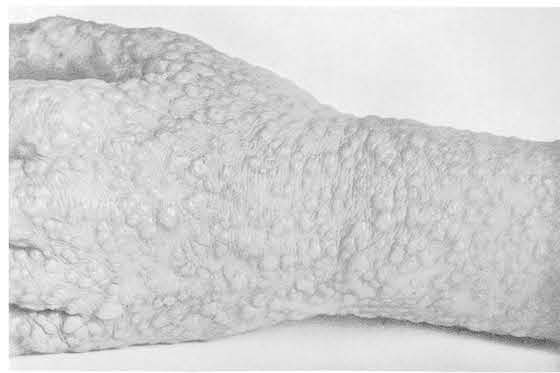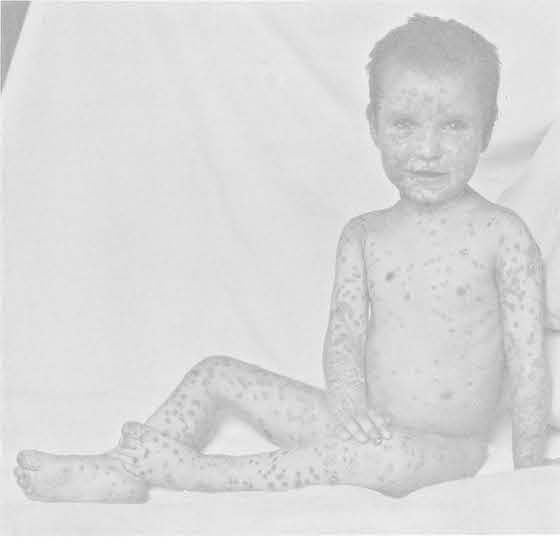
- The rash first appeared as tiny red flecks that rose into bumps.
- They seemed to flow from the face downwards, becoming thickest on the face and extremities.
- This stage lasted about 3 days.
- The bumps became blisters said to feel like BB pellets under the skin.
- The blisters enlarged and filled with thick yellow pus:
- At the center of each pustule was a small depression like a bellybutton:
- In the most common form of the disease, called “discrete” or “distinct” smallpox, the pustules remained separate: patches of normal skin were still visible between them:
- As their bodies began reabsorbing all that pus, many victims experienced a second high fever; this was generally the most lethal stage of the disease.
- About 10 days after the rash first appeared, the pustules began to crust and scab over:
- About two weeks after the rash appeared, the scabs began to fall off, leaving marks that became deep pitted scars, said to be as rough as “nutmeg grater.”
- At first, the scars were brown on light-skinned people, and pale or white on dark-skinned people. The color faded with time, but the pits did not.
- A victim remained contagious until every last scab was gone.
- Confluent Smallpox (WARNING: graphic photos of a fatal case)
- Hemorrhagic Smallpox
All photos on this page by J. B. Byles, from Thomas Francis Ricketts, The Diagnosis of Smallpox (London & New York: Cassell and Co., 1908).














